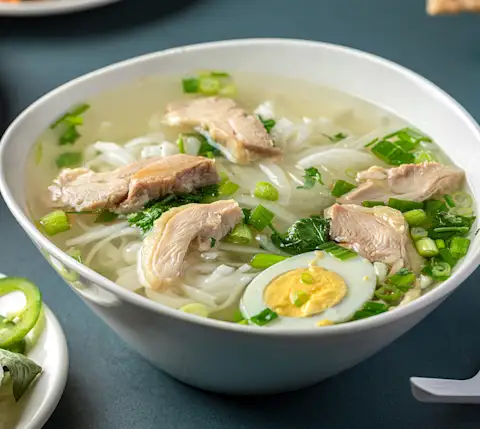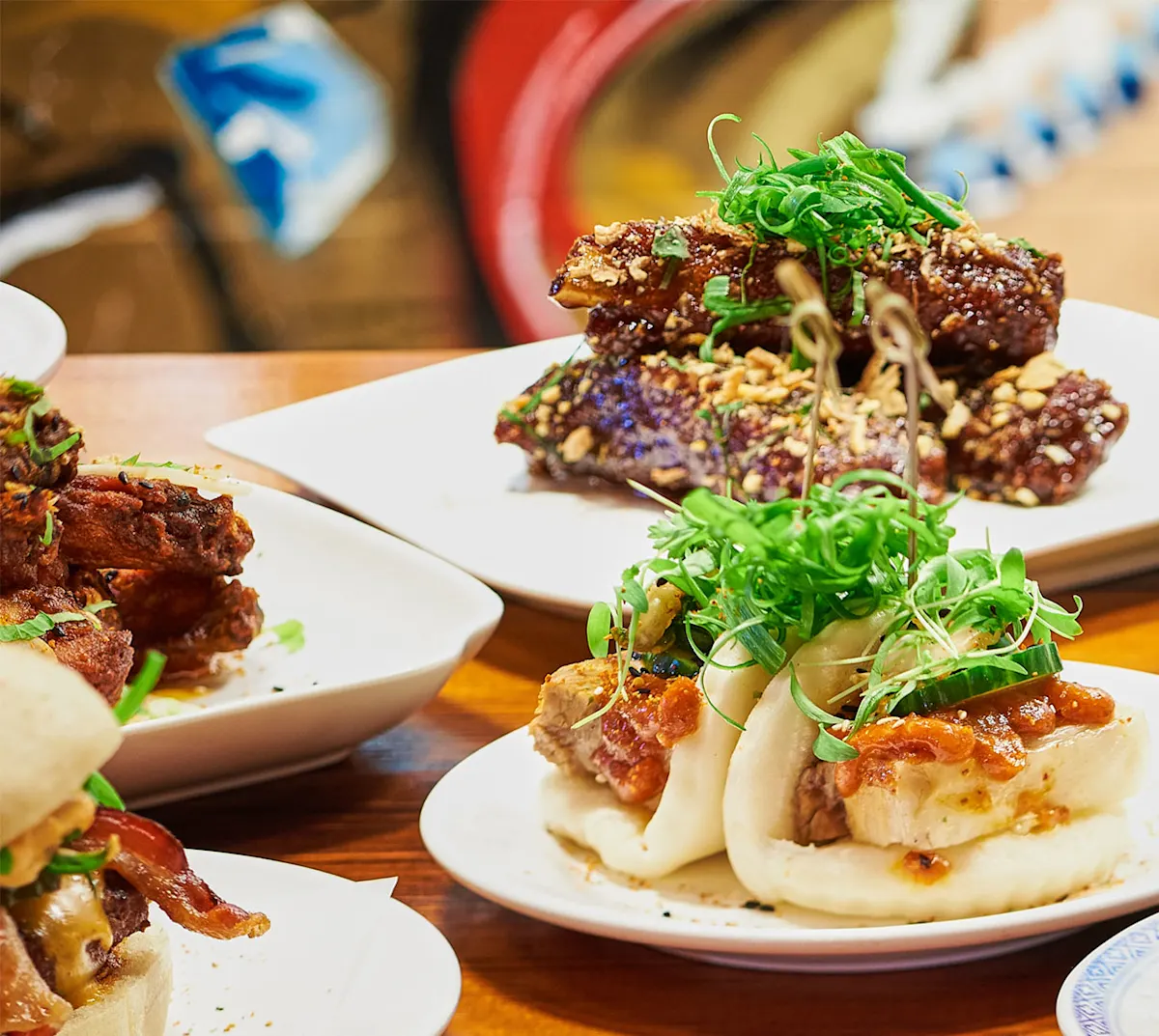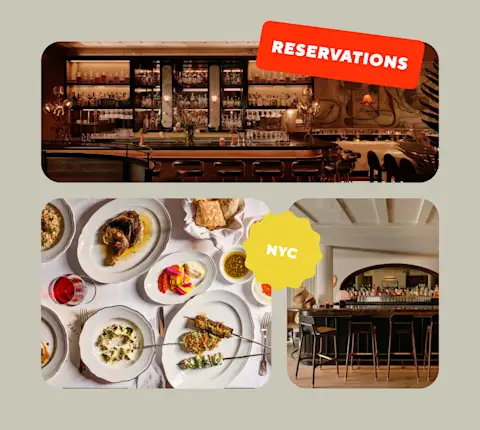On a recent Sunday afternoon, I packed my husband and kids into our station wagon (please excuse the family cliché, but our life really does look like this) and drove 35 minutes into Boston. It was just beginning to rain, and so plans of dining outdoors were dashed. That was okay. I was in the mood for something simmering. Something spicy.
We parked in Chinatown and wandered down a rainy alley. Taiwan Café appeared like a beacon; it was nearly full already, with people who had already discovered what we were about to. My young children ordered what was, debatably, the menu’s simplest dish: chicken with broccoli, which came out with a plate of dumplings. My husband stabbed a piece of chicken with the end of a chopstick and looked up, his expression bordering on revelatory. “What is in this?”
I wish I knew. It looked just like every other chicken with broccoli we had ever ordered: planes of meat slicked with brown sauce; neon veggies cut in uniform trees; a pool of extra liquid for rice amassing at the base of the plate. But it was different. Better. And that’s because Boston’s Chinatown is an undervalued culinary destination. The living, breathing, beating heart of Boston is a world-class Chinatown, absolutely in league with New York’s and San Francisco’s. Here are six reasons why — and thankfully you can order from these Chinatown restaurants in Boston via DoorDash.
1. It's Filled with Established Businesses
Some Chinatown staples, like Taiwan Cafe, have held court in Boston for more than 30 years. Hot tip: Do not do what I did recently, which is make the fatal error of skipping the signature dish, the Sichuan-style whitefish. At the restaurant it’s served in a giant, table-centered wok, replete with sizzling hot peppers. All around us, on that drizzly, gray Sunday, tables began to receive their woks. We stared longingly as we ate our (absolutely delicious!) pork dumplings with chives, mini steamed buns with pork, and scallion pancakes wrapped around beef and cilantro. But we had missed an important part of the experience by skipping the restaurant’s fish.
Old school New Jumbo Seafood is worth a visit. “Established,” in Chinatown parlance, means “knows how to execute,” and New Jumbo — or Jumbo, depending on whom you ask — certainly knows how to make a tasty meal. Despite the titular association, this restaurant serves more than just seafood. Yes, the fresh clams in black bean sauce are delightful (we’re in New England, remember). And the crispy scallops in peppercorn sauce tread the line between simmering heat and firecracker-fresh. But don’t discount the traditionally prepared Peking duck, its skin cracker thin, served with crêpes.
2. You'll Find an Array of Cultures and Cuisines
One thing I noticed during my last walk through Chinatown: The restaurants that came into view were hardly only Chinese in scope. Instead, I encountered restaurants representing cultures from all across Asia. Here was a Malaysian restaurant. There: Vietnamese. On another corner, I spied a Korean spot. Boston’s diverse Chinatown offers Taiwanese food and Sichuan food, shabu shabu and sushi, and everything in between. A visit there is not just a trip for Chinese food. It’s a trip into a world of varied cultures, where many different types of restaurants are thriving simultaneously. That’s part of the beauty of Boston’s Chinatown, a small place that is home to so many different kinds of restaurants.

Pho Pasteur is one of those types of restaurants, a Vietnamese spot that focuses specifically on pho, a soup served both in the north and south of Vietnam (although both sections of the country serve different versions of the soup, to different effect). The Pho Ga, a chicken noodle soup, closely resembles the pho served in Hanoi, in the north, a lighter, chicken-based broth traditionally served with rice noodles and vegetables. The restaurant’s Pho Bo Vien, a beef broth–based soup served with a beef meatball, is more traditional in the country’s south.
Find noteworthy sushi at Irashai Sushi, where sushi, sashimi, maki rolls, and teriyaki reign. The Irashai maki roll comes filled with spicy salmon and mango and topped with yellowtail and white tuna. Set ablaze by the flame of a torch, it’s a roll that will in turn ignite the palate. The menu is surprisingly exciting, departing some from the traditional and expected. Luxury items like uni — served, in this case, with a quail egg — are both available and affordable, making this quick venture into one avenue of Japanese fare just another reason to love Boston’s Chinatown.
3. It's Eminently Walkable
I haven’t eaten at every single restaurant in Boston’s Chinatown — but there’s a part of me that feels like I could if I wanted to, and that’s because it’s so accessible. Bordered by Boston’s theater district and leather district, the neighborhood is arranged in an upside-down T. It’s technically one of the largest Chinatowns outside of New York City, with an entrance denoted by a traditional paifang gate. What makes Boston undesirable to some — how very small it is — is an advantage when it comes to its Chinatown. Boston is so small that you can walk from the North End to the South End in under an hour, if you’re keeping pace. If you’re a hungry diner interested in exploring the neighborhood’s culinary gems, this means less time pounding the pavement and more time eating in actual restaurants. This is an area with plenty of big-city feel and an approachable footprint, meaning you can get anywhere and everywhere you need to go, and quickly.
Five Spices House is a Sichuan restaurant on Beach Street that lacks exterior specificity (it protrudes from a lone corner, not much to look at, with black signage announcing its presence). Inside, the experience is a whole other story. It’s worth diving into Sichuan regional specialties here, like pork kidney and mala dry pot anything (you can choose what ingredients to add, including items like duck feet, scallops, bamboo shoots, and enoki mushrooms). The spice level at this restaurant is a huge part of the point. A simmering, glistening layer of orange heat, bolstered by Sichuan peppercorns, assaults the palate in the best of ways. As for how much heat you’re willing to take, well, that’s up to you.

Another star of the neighborhood is Avana Sushi, a restaurant within a restaurant of sorts (it lives inside a food court that is itself worth checking out). Known by city denizens for its budget-friendly lunch bargains, where a meal includes a miso soup, maki roll, and choice of two sides, Avana consistently produces some of Boston’s most affordable and tasty sushi. One short walk, two great restaurants (and many more undiscovered gems, for sure) is just one reason that Boston’s Chinatown is well worth the visit.
4. It's Up and Coming
In other cities, there may not be room for a ton of restaurant growth in an established Chinatown neighborhood. But that’s not the case in Boston, where new and exciting restaurants are continuing to open and flourish.
While Gene's Chinese Flatbread Cafe is not exactly brand new, it remains part of Chinatown’s up-and-coming culture. On the outskirts of Chinatown (it acts as a border with the neighborhood known as Downtown Crossing), Gene’s offers hand-pulled noodles and Xi’an-style noodle bowls. The standard hand-pulled noodles can be customized to your liking (not spicy, half-spicy, extra-spicy; extra lamb, pork, vegetable, or noodles; sides of tea eggs, skewers, or chili sauce). In the Northwest Chinese style, the food is rich and the menu is streamlined. You’ll find sandwiches cloaked in traditional flatbread (order these or forever hold your peace) and spicy cumin lamb skewers made from lamb shoulder, a panoply of flavors packed into a small space in, yes, Boston.
5. It's Incredibly Historic
Boston's Chinatown is the sole historic Chinatown in New England, with roots dating back to the 1800s. The neighborhood was once host to immigrants from Syria, Italy, and Ireland. Then, in the late 1800s, Chinese immigrants began settling in the neighborhood too. It’s not just the human history, though, that makes Boston’s Chinatown so fascinating. Like the city itself, which is filled with historic homes dating back centuries, this slice of Boston boasts historic landmarks, like Washington Street’s Hayden Building, which was built in 1875 and designed by 19th-century architect Henry Hobson Richardson.

After a scenic tour of the area’s architectural history — which includes, naturally, a walk past the Hayden Building — you’ll be hungry. Washington Street is home to Penang Restaurant, Chinatown’s ode to Malaysia, where the satay chicken comes served with a compelling Malaysian peanut sauce (this alone is worth the journey). Curries and noodle dishes are incredibly important to the cuisine and to the menu here. Try the green curry chicken: slices of chicken marinated in green curry and then served with green beans and eggplant in a coconut broth. The Chow Kueh Teow, a famed Malaysian dish, marries fresh shrimp, squid, bean sprouts, chives, egg, soy sauce, and chili paste in a stir-fry with flat rice noodles for a crunchy, chewy dish that speaks to the sweet and savory notes of this country’s broad cuisine.
I think often of a friend of mine, who has lived in both New York and Boston (and who eventually decamped to Maine). “Boston’s Chinatown is better than New York’s,” she once asserted. Dumpling Cafe, also on Washington Street, is a stunning example of how much this small neighborhood holds. It’s a Taiwanese-style restaurant with pork-and-leek-filled dumplings; Juicy Buns (known elsewhere as soup dumplings) exploding with broth and crabmeat; Taiwan-style pan-fried dumplings with a crisp exterior so satisfying that it’s hard not to imagine ordering a second plate before leaving. The hot and spicy — and I do mean spicy — Taiwan-style eggplant is another necessary order at this modest spot within this historic neighborhood.
6. Supporting Chinatowns Is More Important Than Ever
The pandemic opened a wound in the American Chinatown — a wound of buried-just-beneath-the-surface racism that has since bubbled to the surface. A combination of economic circumstances and racism has been particularly hard on these neighborhoods that have struggled to move past the tremendous losses of the past three years. For those of us who love food — who feel it deeply in our bones, like I do — the best thing we can do is get out and support these places that have fed us in the moments when we have felt both the best and the worst. The delicious and irreplaceable food that these restaurants have put into our world is only here if we are here to buy it.

That’s why I’ll be dining at places like Shojo, an Asian restaurant with a Japanese cocktail list that will rival some of the city’s most happening bars. Snacky favorites at this restaurant include fried eggplant bao — made with heirloom eggplant, of course, as well as a black bean aioli and a yuzu citrus salsa, as well as Wu Tang Tiger Style ribs, amplified with aromatic Thai basil, chili oil, and lime. The Shojonator is a cheeky play on Wendy’s Baconator, but this version comes on pillowy bao bread instead of a sesame seed bun. Inside: a quarter-pound beef patty, smoked bacon, and so-called kimcheese, a term that should probably be trademarked.
Tea I’ll be stopping into casual places, too, like Tea Do, a café dedicated to the fine art of boba (chewy, supple pearls of tapioca, sunken into tall, ice-cold cups of milk tea, which can be flavored pretty much any way you want). Traditionalists, like me, prefer some of the more subtle flavors, like the lilac-hued taro; it’s a starchy root vegetable with a nutty sweetness that won’t overpower. But there are green milk and black milk teas here, too, as well as a host of more smoothie-like concoctions. Tea Do also offers Japanese snacks, like a series of onigiri, triangular wrapped rice packets that are stuffed with different fillings (Spam, shrimp, salmon). For my money, the perfect pairing is a tea (served cold) and a takoyaki, a baked wheat cake featuring octopus and anchored by a peppy sauce.
Support your Chinatown, wherever it may be, but the next time you’re in Boston, be sure to support mine.






